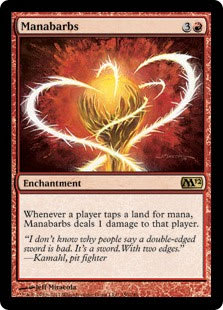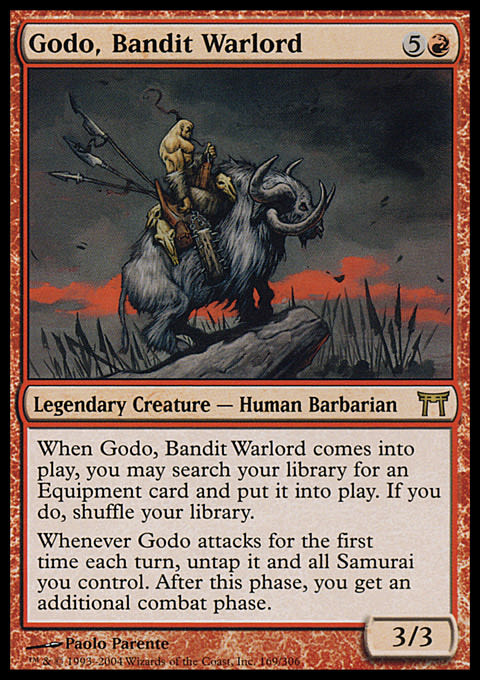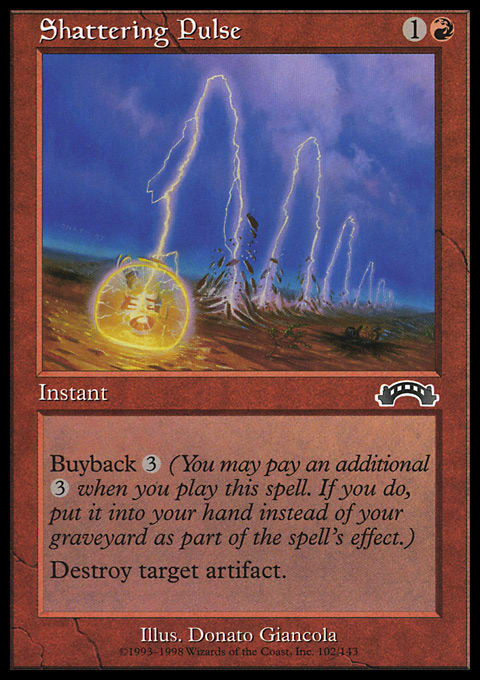Hello, folks! I believe that red is the worst color at the multiplayer table, and today, we are going to look how you can win with it despite that weakness. That sounds like a challenge!
For the record, my list of the worst to best colors at the multiplayer table goes like this: red, blue, green, black, and white. My favorite multiplayer color is green, so I am not playing favorites with that objective list. I already spent an article last week on how to win with blue at the multiplayer table—it falls on the list due to its major mechanics not always translating well to a multiplayer setting. Today, I want to go over the worst color at the table and discuss how you can turn that zero to a hero, baby!
What does red do mechanically? How does red attack normally?
First of all, red has burn. Red deals damage to creatures and players with aplomb. Not only will it deal damage a la Lightning Bolt, but it will also use damage as an incentive to force opponents to play in a certain way. Classic pain-incentive cards include Manabarbs and Battle Strain. This is one of the core mechanics of red, and no conversation of the color is complete without it. Red also has damage-based sweepers that clean out multiple creatures, and this gives it some sweeping removal. It’s ranked third out of five in the sweeping-removal department.
There are two permanents types red is really good at destroying: artifacts and lands. Red has loved to blow up artificial stuff ever since Shatter, and there have been a lot of good cards printed over the ages to do just that. Additionally, red can blow up lands with a precision that overpowers everything else. Another permanent type that red is decent at dealing with is planeswalkers. Since it can aim burn at a planeswalker after hitting a player, it can often pull off enough counters to take it out. It’s a secret advantage of red many miss when analyzing it. Red’s classic weakness is in enchantments and in creatures. If it can’t burn a creature, it can’t kill a creature. Perhaps that creature is something like Cho-Manno, Revolutionary, or maybe it just has a big butt like Indomitable Ancients. Red has a real issue with indestructible creatures. Also, it can’t counter, bounce, or steal an enchantment as blue could, nor can it destroy it as green or white can. Red just has to suck it up against them.
Another strength of red is that it is the second-best color at flying creatures. Yes, this color, which “doesn’t really fly,” ends up with an average of one sexy Dragon a set, and over time, it has enough high-quality Dragons to really establish dominance in the air. You might not expect it, but only white with its Angels and Avatars and Archons has enough power to beat red in the air.
Red has a smattering of good artifact cards, such as Goblin Welder and Godo, Bandit Warlord. For the most part, it hates artifacts, but it’s a love–hate relationship. Haste is strong in multiplayer because it enables red to be the first one to swing after a mass-removal spell is dropped. Other mechanics, such as mountainwalk and Firebreathing don‘t offer a massive amount of value. First strike is solid, though. Red has a few minor abilities: preventing things from blocking and destroying Walls.
Red has a chaos theme, including coin-flipping, that a lot of people adore. It’s not powerful, but it certainly can be fun!
Much like blue, red is where a lot of crazy stuff is tossed into. In particular, red sees a lot of janky rare red enchantments that change the game. Examples include Bludgeon Brawl, Pandemonium, Grand Melee, and Leyline of Punishment. You can often find something to build around here. Also, red, as the trickster, grants the ability to Fork and deflect spells, and it steal stuff temporarily. All of those can add value to your deck.
Okay, now that we’ve seen what red brings to the table mechanically, how does that translate to the multiplayer game?
Burn is weaker in multiplayer than it is in duels. In the article on blue, I reminded readers that when playing in a five-player game, you are being outdrawn four-to-one every turn and have to potentially defend against four sets of attacks to your one. You also have four times the starting life total. If people start with 20 life (some formats, such as Vanguard and Commander change this), you are facing 80 life to your own 20.
In a duel, a Lava Axe isn’t exactly a winning card, but it does take out a quarter of the starting life total you need to kill someone. That’s 25% of the way there with one card, which is pretty useful, even if the card isn’t that hot. Against four other people, that Lava Axe just removes 5% of the starting life totals for an amazing 5-mana cost from a sorcery. Ick! You can see how dealing damage to a player is weakened.
Remember that a Counterspell is bad math against a multiplayer opponent because one is being outdrawn four-to-one, so a one-to-one trade means you haven’t changed the math against you. In a similar way, burning a creature down leaves you in the same boat. If you Lightning Bolt away an opposing creature, you are still on the wrong side of a four-to-one ratio of card disadvantage. Therefore, pinpoint burn as removal is weaker as well as burn at someone’s face.
That doesn’t mean there is no place for it. There is a need for an emergency release valve that will save you from an attacking creature instantly. Just like a deck will need the occasional Cancel, it will also need the occasional Bolt or other card. But you cannot rely on this as a means to keep creatures down. Instead, you need to push cards that are flexible with the damage they will deal to someone’s head (such as an X spell) or those that have the potential to take out multiple offensive creatures. You can consider a lot of strong spells, such as Rolling Thunder and Slice and Dice.
As more people play with flyers, the more powerful they are, so flyers are quite useful at keeping the peace or giving you a way to exploit a defense if they are lacking them.
Destroying an artifact or land is nice, but ideally, you want to do so in a way that does not force you into another one-to-one trade. Using them on a creature that enters the battlefield with a trigger, such as Batterhorn or Avalanche Riders, is important to keep the card advantage going. You can also play spells that are repeatable, such as the buyback Shattering Pulse or the taking-out-two card Rack and Ruin.
Red’s weaknesses are many. Some mechanics, such as preventing blocking, are more limited in use. There’s a place for Chaos effects (half of Order // Chaos), but for the most part, these just aren’t that important. You can’t do anything to an enchantment. You are tied with white for the worst color in terms of raw card-drawing, so you are very sensitive to card advantage. You have a large creature base that is built on fast creatures that are fragile, and that doesn’t translate as well to multiplayer. Therefore, your creature base you can draw from for quality multiplayer creatures is more limited than is any other color’s. With these various issues arising in terms of card advantage, burn being weaker in multiplayer, not being able to handle enchantments, and more, how can you win?
. . . By emphasizing your strengths.
Strength #1: Flying Creatures – Never underestimate your dragons. Everything from new sexy cards such as Thundermaw Hellkite to classics such as Bogardan Hellkite and Flameblast Dragon are soaring around just waiting for you to drop them down onto your play mat. Sure, there are a few non-Dragon flyers of quality, such as Akroma, Angel of Fury and Avatar of The Same. But for the most part, your sexy flyers are Dragons. So push them! You need to throw out some very strong creatures that will destroy the blue and black flyers and give the white flyers some notice. Eventually, white wins a flying game, but you are in the conversation.
Strength #2: Haste – Don’t ignore the power of haste, especially after a mass-removal spell wipes the board clean and thus opens things up. You won’t find a chance to attack with a newly played creature until four or five other people take their turns, which gives them a lot of opportunity to summon defenses, play sorcery-speed removal, or untap that attacker to keep it back to block. Removing the knowledge of a creature for a full turn around a table gives you a powerful edge. Emphasize it with enchantments such as Fervor or, my favorite, In the Web of War. It’s a mechanic that is amplified in multiplayer, just like vigilance and deathtouch, and it’s the only one that you’ve got, so run it.
Strength #3: Mass Removal - You are the third-best color to cast mass removal. You can mass-destroy lands and artifacts, and you can deal mass damage to clear out some creatures. Because of this, you have the ability to rack up card advantage, not with Tidings or Stroke of Genius, but with Shatterstorm and Magmaquake. Even if you are third fiddle behind black and the uber-master white, mass removal is so vital to winning that pushing is required. One of my favorites in this regard is Starstorm. It’s an instant, so you can use it when attacked or at the end of someone’s turn or in response to someone trying to go off with a combo by killing all of his dudes. If you don’t need it, it cycles. Plus, it hits all creatures, not just all ground creatures. Now, there is something to be said for the deck with a bunch of flyers and Earthquake and Magmaquake effects, but sometimes, you just want a Wrath of God, and this does a solid Wrath effect for red.
Strength #4: Trickery – Sure, you can’t counter things or steal something permanently. But you can play havoc with people’s plans, and that goes really far. You can fork something—like with the actual Fork. You can deflect with Shunt or something, too. I like Reiterate because you can buy it back. But the main issue with these cards is that you sometimes want a Fork, but you have a Shunt, and you sometimes wish for a Shunt when you have that Fork. That’s why I recommend Wild Ricochet. Sometimes, you want a Fork, sometimes you want a Shunt, and sometimes, you want both. It’s always there to help. Let’s also not forget the value of a card such as Grab the Reins, stealing one creature to block another and having both of die. One particular card in this genre is devastating—I don’t believe any spell has won more multiplayer games—and that is Insurrection.
After that, you can add in the suggested cards, such as Flametongue Kavu and Manic Vandal due to their enters-the-battlefield abilities or Fanning the Flames because it’s an X spell that you can buy back. Then, add some multiplayer classics. You know, cards such as Sneak Attack, Kiki-Jiki, Mirror Breaker, Wheel of Fortune, Taurean Mauler, Hamletback Goliath, and even the aforementioned Insurrection.
Red has a lot to overcome, but it can if done correctly. So, win some games with your red today!
See you next week,
Abe Sargent





























